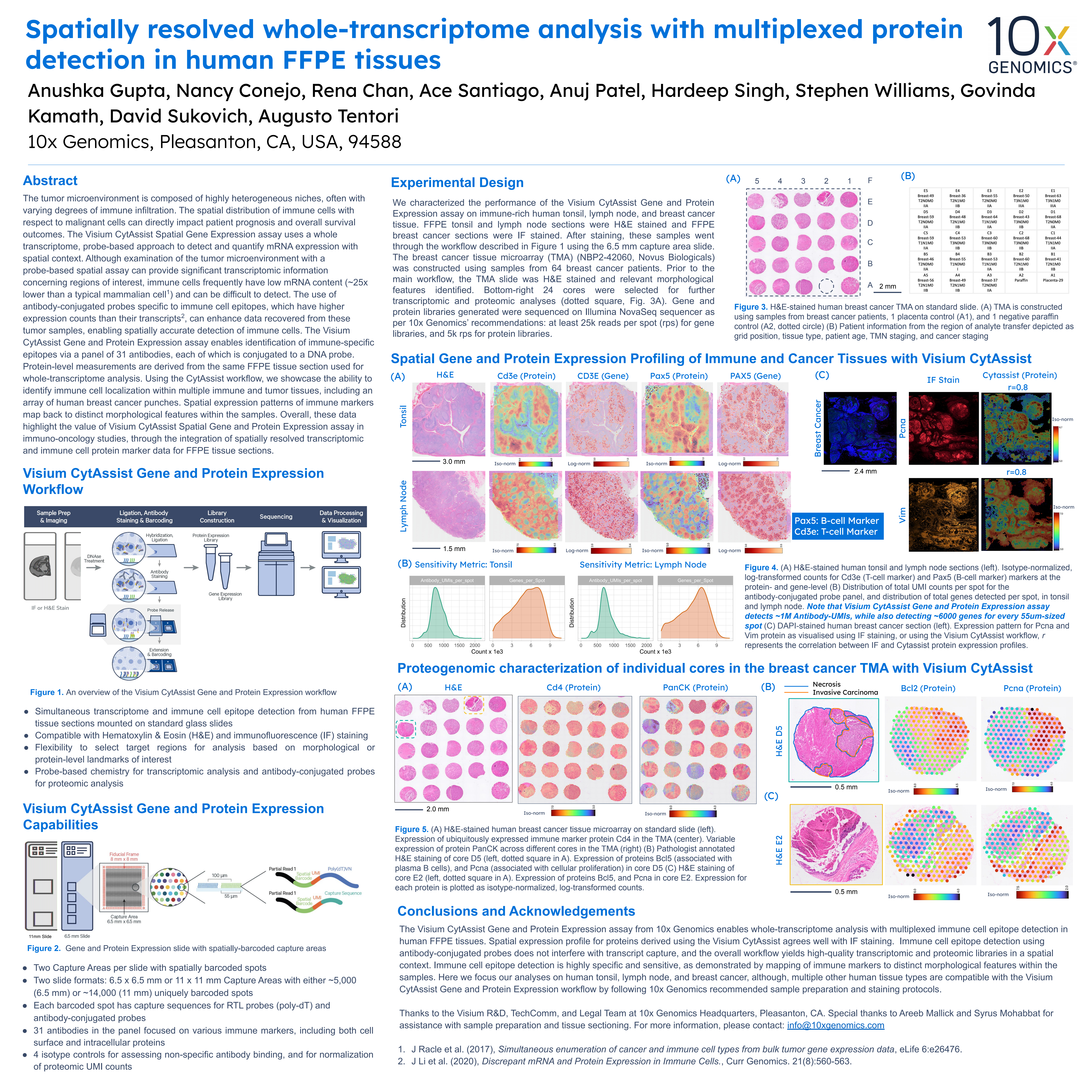
Spatially resolved whole-transcriptome analysis with multiplexed protein detection in human FFPE tissues
The tumor microenvironment is composed of highly heterogeneous niches, often with varying degrees of immune infiltration. The spatial distribution of immune cells with respect to malignant cells can directly impact patient prognosis and overall survival outcomes. Using the CytAssist workflow, we showcase the ability to identify immune cell localization within multiple immune and tumor tissues, including an array of human breast cancer punches. Spatial expression patterns of immune markers map back to distinct morphological features within the samples. Overall, these data highlight the value of Visium CytAssist Spatial Gene and Protein Expression assay in immuno-oncology studies, through the integration of spatially resolved transcriptomic and immune cell protein marker data for FFPE tissue sections.
The tumor microenvironment is composed of highly heterogeneous niches, often with varying degrees of immune infiltration. The spatial distribution of immune cells with respect to malignant cells can directly impact patient prognosis and overall survival outcomes. Using the CytAssist workflow, we showcase the ability to identify immune cell localization within multiple immune and tumor tissues, including an array of human breast cancer punches. Spatial expression patterns of immune markers map back to distinct morphological features within the samples. Overall, these data highlight the value of Visium CytAssist Spatial Gene and Protein Expression assay in immuno-oncology studies, through the integration of spatially resolved transcriptomic and immune cell protein marker data for FFPE tissue sections.